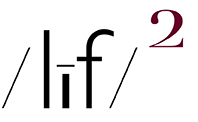(embiggenable)
(embiggenable)
(embiggenable)
OVER THE PAST WEEK I HAVE SAT DOWN QUITE A NUMBER of times to write a new entry and failed to do so. That’s cuz, inasmuch as I try to stay on topic, re: the medium of photography and its apparatus (apparatus = conventions and practices), I realize that over the past nearly 2 decades, I have touched upon so many related subjects that most days I feel that I have written everything there is to write about. But nevertheless, I have managed to list a few topics about which I will write over the next week or so…
…one such topic: my idea on how to make a visually interesting picture.
Most “serious” amateur picture makers believe the answer to the question of how to make a visually interesting picture is simple - make a picture of an “interesting” thing (with a dollop of art sauce). That is, q thing and effect that everyone knows about and likes to look at. The result: pictures that are easy to “understand” - the concept of Captain Obvious comes to mind. Or, how about the idea of the mindless pursuit of pleasure, cuz the mind need not get involved in the viewing of such pictures.
That written, while I would highly recommend the pursuit of picturing “common” things in an interesting manner, aka: how one’s own vision sees the world, the single most important “thing” one should pursue is creating the instigation for a viewer of your picture(s) to ask the question, “Why did he/she make this picture?”
That’s cuz, if why a picture was made is easily apparent (pretty is as pretty does), iMo, that picture lacks any reason to get involved with it and, ultimately, has no staying power. In other words, an “interesting” referent, in and of itself, is not enough to sustain extended consideration and contemplation, especially so in the Fine Art World. Rather, it is the printed picture, in and of itself, which must be visually interesting, independent of the illustrated referent.
And what is it that makes a picture visually interesting, independent of the illustrated referent? Answer: Form. That is, how the picture maker has “arranged”-by means of his/her framing and POV-line, shape, space, tone (value), and color across the 2D visual field of a print. The result is a thing, AKA: the print, which not only illustrates, in a literal sense, referents found in the real world, but also illuminates, by means of visually interesting form, visual properties of sections of the real world that lie beyond their mere physical appearance.
So, there you have it. Easy, Peasy. Go forth and make interesting pictures.
